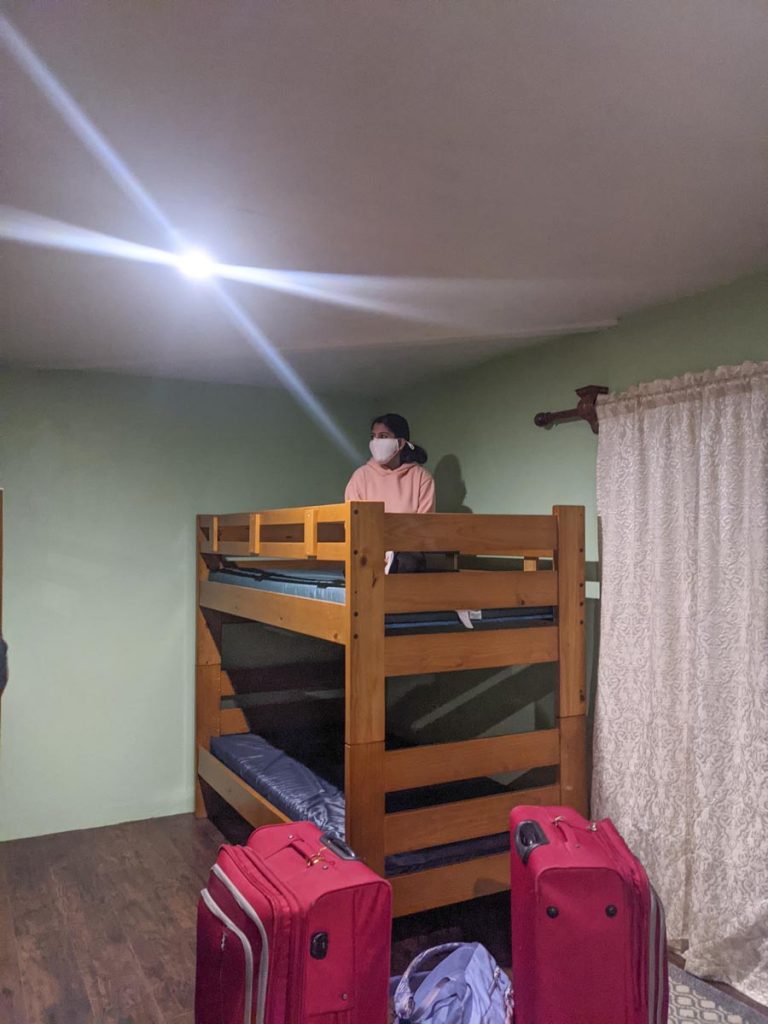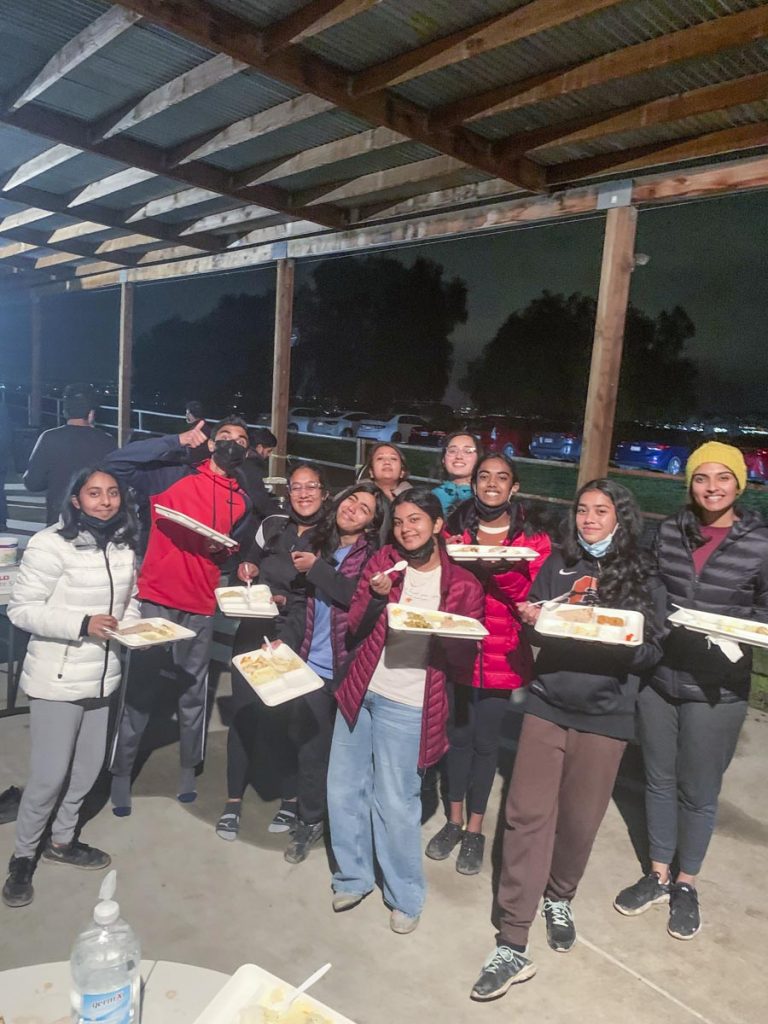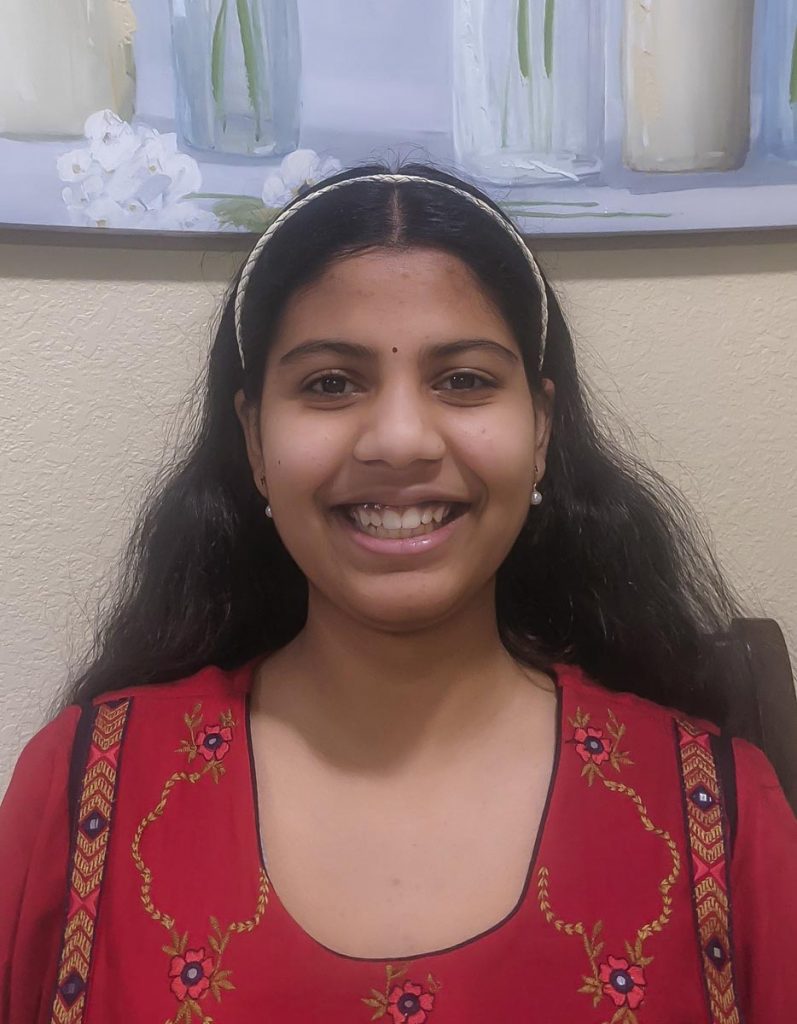A hundred of us enjoyed four days of classes, yoga, music, good food—and time to reflect on being young Hindus in America
By Mugdha Shinde, 14
Cupertino, California
Last december, i attended a hindu camp called SSV Prathamik Varga, run by the Hindu Swayamsevak Sangh. SSV stands for “Swayamsevika Shiksha Varg,” which loosely translates to “volunteer training session.” Though the main focus of the camp was how to become an ideal swayamsevak, or one who freely gives back to the community, there were also many Hindu ideas and traditions taught and practiced at the camp. Held near Mountain House town in California, on a HSS-owned site, the camp lasted four days.

The campsite wasn’t far from the town, around a 15-minute drive, but it was far enough that we weren’t disturbed by city activities. This was the first time after being purchased that the campsite was heavily used, so we had to figure out a lot of things as we went along, such as heating. It was cold, around 40°-50° F. Additionally, it was rainy and muddy, due to the time of year, and the location of the camp on top of a grassy hill, surrounded by grazing areas. Thus, we had to adjust the outdoor activities, to be able to do them indoors. We had to pack a lot of jackets and heavy clothes. Generally, there wasn’t a specific “Hindu dress code”. However, for specific activities, traditional clothing was highly recommended. We also had a lot of people attending the camp, around 60 girls and 40 boys, so we had to figure out the sleeping situation as well. Each sleeping room had six sets of two-high bunkbeds. Due to Covid-19 restrictions, all participants had to be vaccinated and show a negative Covid-19 test to participate.

The camp was the first part of a three-year process to become a full swayamsevak. Though there is no formal membership to be a part of HSS, completing the three years allows you to start new shakhas (local groups) and lead them. This camp covered just a third of the first year. It was for teens and young adults, led by people who had completed the three-year process. The leaders were mostly teens and young adults, though there were some special speakers who were a bit older. They all had a lot of knowledge on the topics and were well prepared to answer questions. The curriculum was set by the central HSS office, but we didn’t have to follow exactly, and ventured from it multiple times. Overall, it was a fun and informative experience.
In the mornings, we would wake up at 5:30. At 7am, we would do surya namaskar. It was extremely beneficial to practice, as I got a good exercise for my body each day–like a warm-up for the activities ahead. However, it was tiring to do before breakfast.
After breakfast, we had morning shakha. Shakha is the term used for the sessions conducted every week, usually on Sundays, all over the US, by Hindu volunteers in the community. At the camp shakha, we played games and learned music, practiced leadership and discipline by performing various activities such as the raising and lowering of the dvaja, or flag, and giving and following basic commands in Sanskrit. We then had lunch, which was vegetarian Indian food, prepared by shakha attendees who live close to the campsite.
During the whole camp, we were not allowed to use phones, except right before bed. I didn’t have a phone anyway, so I wasn’t affected by this rule. However, I did notice that the lack of phones made sure people interacted during the breaks. The no-phone policy also drastically reduced distractions ensuring everyone gave their whole energy and attention to the activities. By nighttime, everyone was so tired, no one had a lot of energy to mess around on their phone. I was surprised by how few people called their parents. Nevertheless, there were a few funny videos filmed.
After lunch, we had baudhik sessions, talks by older leaders, which focused on the intellectual side of being a swayamsevak. Several adults talked to us during these sessions, sometimes telling stories about great Indian personalities. At other times they talked about giving back to the community. I learned a lot of new things from these sessions, though sometimes they got a bit long. Some topics were the life of Swami Vivekananda, and what makes an ideal swayamsevak. After baudhik, we had afternoon shakha, which was basically a repeat of morning shakha. Then came a much welcomed tea break.
Between tea break and dinner, we had group conversations on topics such as the benefits of cows, and the portrayal of Hindus in society, especially in school textbooks. However, we were free to drift off to other topics, as long as they were somewhat relevant. Thus, we went from talking about cows to wearing bindis at school. Many people mentioned the comments they got for wearing a bindi at school. Some comments were genuinely out of curiosity, while others were plain rude. A lot of people mentioned they have gotten comments similar to “Is there something on your face?”

All in all, these conversations were really useful, as I got to hear from others my age about Hinduism. For example, a lot of people mentioned that they did not like that their school focused only on pictures of a “polluted” river Ganga. We unanimously agreed that while the Ganga is polluted, the problem is not specific to India. Rivers such as the Thames in London, or the Mississippi in the US are polluted as well. Moreover, people were frustrated that the textbooks do not mention the beautiful and rich culture of India and Hinduism.
After the scheduled conversations, we continued discussing issues. Many shared their stories about being a Hindu at school. The textbook situation came up again and again, and people shared their personal efforts to improve it. One girl said that she refused to take a test on her school’s Ancient India unit, because the information they were being tested on was false. Overall, it was nice to see that others had experienced some of the things I had.
After these conversations, we would have ratri karyakram, which translates to “night program.” These programs were a way to relax and enjoy ourselves in the night after a day of hard work. They were filled with fun group activities, and were one of my favorite parts about the camp. One night, we had a scavenger hunt. We did a talent show to wrap up the camp, in which several comedy skits were performed. Multiple people performed traditional dances, and some even performed rap songs. The night programs generally weren’t directly related to being swayamsevaks, being Hindu or being Indians. Mostly, they were an awesome time for everyone to socialize and make friends.
Alas, the camp came to an end, and friends had to return home. Four days earlier, I hardly knew anyone, but at the end of the camp, I knew almost everyone. At the camp, I got to socialize, make new friends from all over the San Francisco Bay Area, gain new perspectives on Hinduism and shakha, and learn a lot of new things about my culture.
I asked some of my fellow attendees about their thoughts on the camp. One attendee, who wishes to remain anonymous, said, “I thought it was fun having roommates and meeting different types of people.” Sanjeevani Dedge, an attendee of my age, remarked, “At SSV I met so many new people who I quickly became friends with, and I was exposed to so many new things such as self defense and yogchap [a musical instrument combining two sticks and cymbals that is played in the HSS marching band]. I also got to explore and learn more about my culture and have discussions about it with my friends. It was truly a life-changing experience that I will never forget.”
Some improvements for the camp would include a shorter schedule—being awake from 5:30am to 10pm was exhausting. In addition, having another short break in the day would also drastically improve student participation in the activities. Finally, having surya namaskar after breakfast would increase its benefits. Despite these issues, the camp was really amazing.
All in all, it was extremely fun to be with friends and experience being Hindu at a camp. In the future, I would definitely participate in similar camps, and I hope that more such camps are conducted all around the world.

About the Author
Mugdha Shinde, 14, is an 8th-grade student at Cupertino Middle School in Cupertino, California. She plays the trombone in her school’s band and enjoys cooking and baking. mugdha.shinde29@gmail.com
